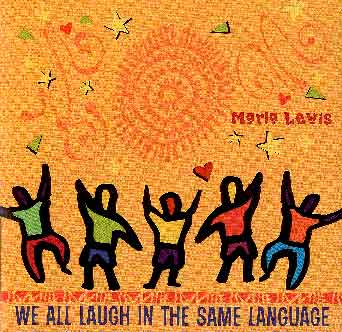Childrens Music Portal
Articles : Marla Lewis : Let's Write A Song 2
Articles : Marla Lewis : Let's Write A Song 2
sharing knowledge,
cultivating resources
cultivating resources
Creativity in the Classrooom
“Let’s Write a Song! Part II”:
Writing the Verses and Completing Your Song
©2005 by Marla Lewis
This article assumes you have read and been inspired by “Let’s Write a Song! Part One.” Here are the amazing things you and your class have accomplished:
Everyone understands and can apply the concepts of lyrics, melody, and chorus
You have brainstormed, taken notes, and discussed the topic you decided to write about; and
You have written your chorus, revised it, set it to music, recorded it, put it aside,
listened to it again, and decided you LOVE it!
Great work! Now you are ready to write the verses. Kids always ask me: What’s THAT? I tell them the following:
If the chorus is the main idea of the song, the verses supply the supporting details
(This point is so important for children improving upon their reading and writing
skills in general!)
Every verse within a song is set to the same melody, but the lyrics are different
(except in rap songs, which contain spoken verses)
At this point, we revisit some of the tunes we listened to before (e.g., “God Bless the USA”
by Lee Greenwood), and identify the verses this time.
Hopefully, your classes’ brainstorming session yielded many ideas that can serve as the supporting details needed for the verses. Those ideas need to be organized into subtopics, which become the blueprint for your song. The most effective way I know to organize ideas is by using a graphic organizer. My favorite type of graphic organizer is called a web.
Left brain and right brain working together: organization for your inspiration!
Here’s an example from a song I wrote with a first grade class (That’s right, folks, first grade!) We had already written the chorus:
‘Round the clock, round the clock in school
‘Round the clock, round the clock in school
We decided to make it a rock song and I set it to original music. The main idea of the song (hopefully obvious from the chorus) is: This is what we do in school every day. We organized our brainstormed ideas in a web like this:

Decide on your Rhyme Scheme and Go!
For this song, we decided that each verse
Would have four lines;
Lines 1 and 3 would rhyme if we could manage it
Lines 2 and 4 would definitely rhyme, or at least, almost rhyme!
Since the class was also learning how to tell time on the hour, we went to the first box of our web and began like this:
Teacher: So what’s the first thing we do in the morning?
Class: We get up.
T: What time?
C: Seven o’clock.
T: What’s a better way to say, “get up?” Look at the first box on the web!
C: Rise and shine!
T: Great! At seven o’clock we rise and shine. Okay, now what do we at 8?
C: At eight o’clock we go to school
T: Perfect! Now what rhymes with shine?
C: Fine, nine spine, pine, line, mine, etc….
T: Good, now, what do we do next?
C: When we say the pledge, it’s almost nine….
T: Yes! We say the pledge, it’s almost nine. Then what?
And so on, until we finished the first verse:
At seven o’clock, we rise and shine
At eight o’clock we go to school
Say the pledge, it’s almost nine
And catch up on the morning news
Here is our second verse. Compare it to the second box in the web:
At ten o’clock we read and write
Eleven o’clock is Language Arts
Phonics, spelling, story telling
By twelve o’clock I feel so smart!
Some additional points to consider:
The writing process does not always go as smoothly as depicted here!
The younger the grade, the more teacher help is needed to craft the song.
Notice how we sometimes found the rhyme first and then wrote the line of the verse.
That “backwards strategy” is quite helpful, especially when you get stuck.
When we had completed the song to our satisfaction, we recorded it, created an illustrated “singing book” for it, and performed it for parents and assemblies.
That’s not all! I have used this tune and template many times since to write new versions of “Round the Clock in School” with older classes, much to everyone’s delight.
I hope these suggestions will further inspire you and your classes to sing, write, read, and revel in the creative process.
In the meantime, stay tuned for my next article: “Let’s Write a Song, Part 3: The 12 Bar Blues!
Marla Lewis
(Marla is one of our select artists with a cd in The Portal Store and songs in the Listening Room)


Childrens-Music.org